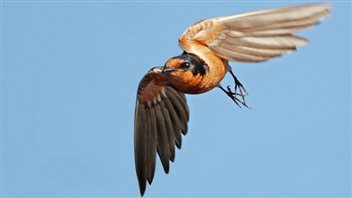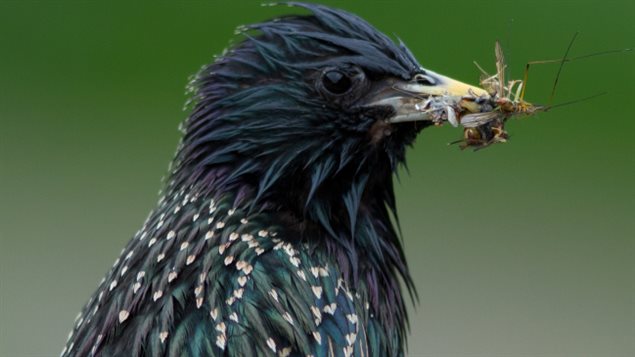Fingers are once again being pointed against a commonly used farming pesticide family called neonicotinoids.
These insecticides are widely used “prophylactically” on Canadian farms, often as a coating on corn, soy, and canola seed, but also on wheat, oats, potatoes, fruit, and on commercial production of flowers. Millions of hectares of Canadian farmland is cultivated using “neonics”.
A new Dutch study examined the effect of imidacloprid, one of the most widely used neonicotinoid insecticide and its effect on insectivorous bird populations. It found a 3.5% annual drop in bird populations where concentrations of imidacloprid was found in surface water. As little as 20 nanograms per litre was enough to cause the decline.
The study from Raboud University Nijmegen and the Sovon Centre for Field Ornithology was published in the journal Nature.

The study also found that the decrease in birds around farm areas appeared only after the introduction of imidacloprid to the Netherlands, in the mid-1990’s.
The report indicates that neonicotinoids have a long half life and as such can accumulate in soils and leach into surface and ground water. It also says the systemic property-i.e-ability to spread throughout all the tissues in the plant, indicates that many organisms in an agricultural environment are likely to be exposed.
An earlier study by University of Saskatchewan biologist Christy Morrissey noted that concentrations of of neonics in wetlands in Canada were often much higher than the levels cited in the Dutch study.
The Dutch report suggests that the killing off of insects is limiting food supply for insect eating birds. In Canada, many observers have noted a severe decline in birds like swallows, flycatchers and so on of around 30% in the last few years.
The research study concludes that the affect of neonics on the environment is more substantial than thought and that “Future legislation should take into account the potential cascading effects of neonicotinoids on ecosystems.”







For reasons beyond our control, and for an undetermined period of time, our comment section is now closed. However, our social networks remain open to your contributions.